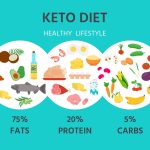Diet plan to lower triglycerides :Triglycerides are a type of fat found in your blood. While your body needs some triglycerides for energy, high levels can increase your risk of heart disease and other health issues. Fortunately, diet plays a crucial role in managing triglyceride levels. In this blog post, we’ll explore a comprehensive diet plan aimed at lowering triglycerides and promoting heart health.
Table of Contents
ToggleTriglycerides:
Before diving into the diet plan, let’s briefly understand what triglycerides are and why it’s important to keep them in check. Triglycerides are fats that circulate in your bloodstream. They come from the food you eat and are also produced by your liver. High levels of triglycerides can contribute to atherosclerosis, a condition where fatty deposits build up in your arteries, increasing your risk of heart attack and stroke.
What are 4 signs of high triglycerides
- Pancreatitis: Severe abdominal pain could indicate pancreatitis, which can be caused by high triglyceride levels.
- Xanthomas: Fatty deposits under the skin, particularly around the eyes or knuckles, may signify elevated triglycerides.
- Chronic Fatigue: Persistent fatigue or weakness can be a symptom of high triglycerides impacting energy levels.
- Obesity or Weight Gain: Rapid weight gain or obesity, especially around the waistline, could be linked to elevated triglycerides. Regular blood tests are essential for accurate diagnosis and monitoring.
What is the danger level of triglycerides
Triglyceride levels are typically categorized as follows:
- Normal: Less than 150 milligrams per deciliter (mg/dL)
- Borderline High: 150 to 199 mg/dL
- High: 200 to 499 mg/dL
- Very High: 500 mg/dL or above
Levels above 200 mg/dL increase the risk of heart disease, while those exceeding 500 mg/dL require immediate medical attention to prevent complications like pancreatitis or cardiovascular events. Regular monitoring and lifestyle modifications are crucial for managing triglyceride levels.
Diet plan to lower triglycerides
- Limit Sugary Foods and Beverages: Foods high in sugar, such as sweets, sugary drinks, and desserts, can raise triglyceride levels. Opt for healthier alternatives like fruits or unsweetened beverages.
- Choose Healthy Fats: While reducing overall fat intake is important, it’s essential to focus on healthy fats like those found in nuts, seeds, avocados, and fatty fish such as salmon and mackerel. These fats can help lower triglycerides and improve heart health.
- Increase Fiber Intake: Foods rich in fiber, such as whole grains, fruits, vegetables, and legumes, can help lower triglyceride levels. Fiber helps regulate blood sugar levels and promotes a feeling of fullness, which can prevent overeating.
- Limit Alcohol Consumption: Alcohol can significantly increase triglyceride levels, so it’s important to consume it in moderation or avoid it altogether.
- Watch Portion Sizes: Even healthy foods can contribute to high triglycerides if consumed in large quantities. Pay attention to portion sizes and avoid overeating.
Sample Diet Plan: Here’s a sample diet plan that incorporates the above guidelines:
Breakfast:
- Oatmeal topped with fresh berries and a sprinkle of nuts
- Green tea or black coffee
Mid-Morning Snack:
- Greek yogurt with sliced almonds and a drizzle of honey
Lunch:
- Grilled salmon salad with mixed greens, avocado, and olive oil vinaigrette
- Whole grain roll
Afternoon Snack:
- Carrot sticks with hummus
Dinner:
- Baked chicken breast with quinoa and steamed broccoli
- Mixed fruit salad for dessert
External Resources
FAQs:
Q: Can exercise help lower triglyceride levels?
A: Yes, regular physical activity can help lower triglycerides. Aim for at least 150 minutes of moderate-intensity exercise per week.
Q: Are there any medications to lower triglycerides?
A: In some cases, medication may be prescribed by a healthcare provider to help lower triglyceride levels, especially if lifestyle changes alone are not sufficient.
Q: How quickly can diet changes lower triglyceride levels?
A: It varies from person to person, but making healthy dietary changes can lead to improvements in triglyceride levels within a few weeks to months.
Conclusion:
Lowering triglyceride levels is essential for maintaining heart health and reducing the risk of cardiovascular disease. By following a balanced diet that includes healthy fats, fiber-rich foods, and limiting sugary and alcoholic beverages, you can effectively manage your triglyceride levels and promote overall well-being. Combine dietary changes with regular exercise and consult with a healthcare provider for personalized advice and guidance. With dedication and commitment, you can take control of your heart health and enjoy a healthier life.










